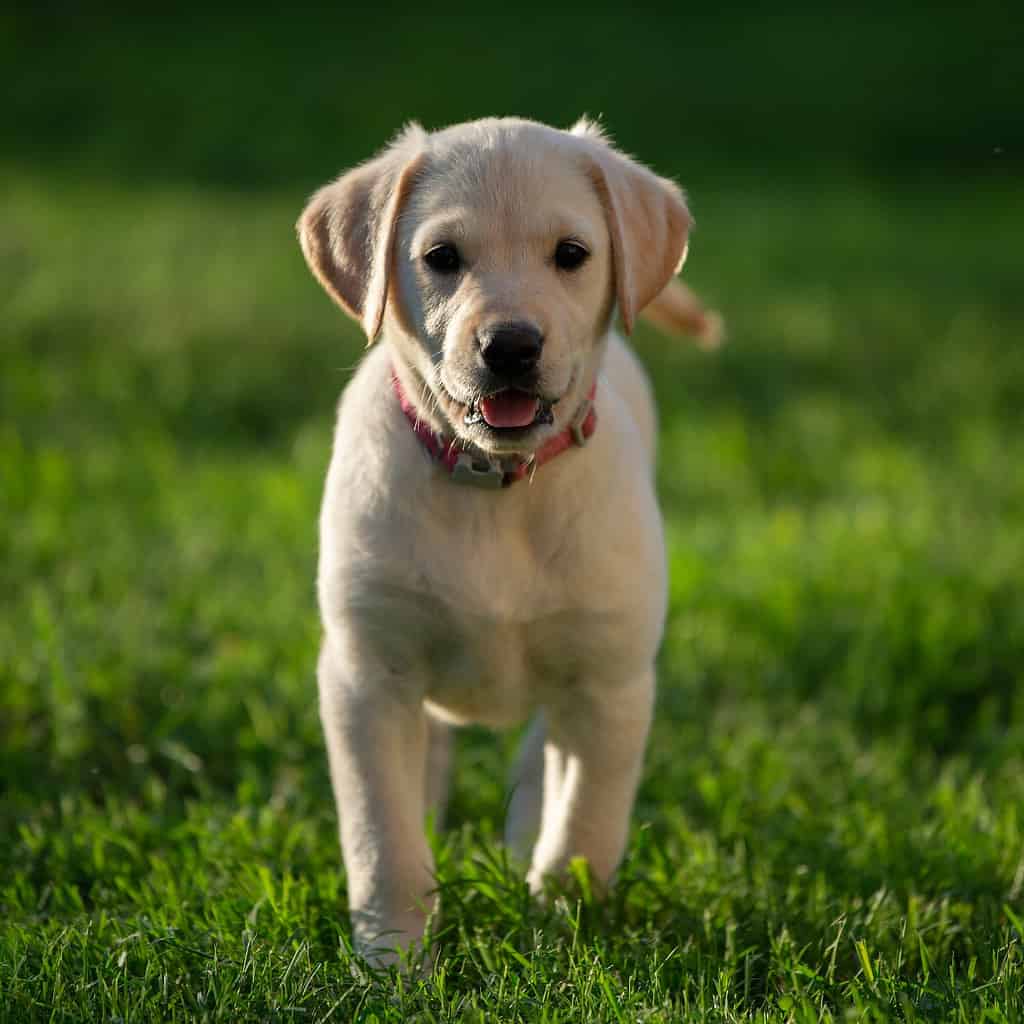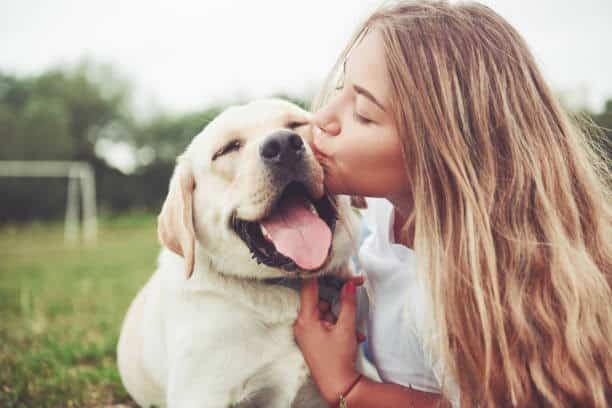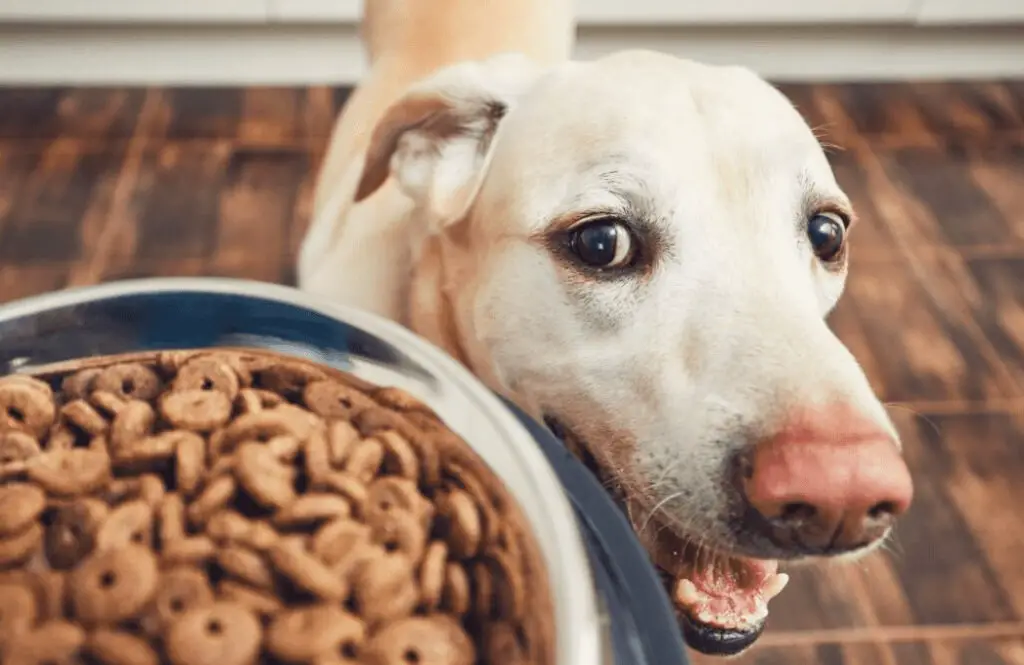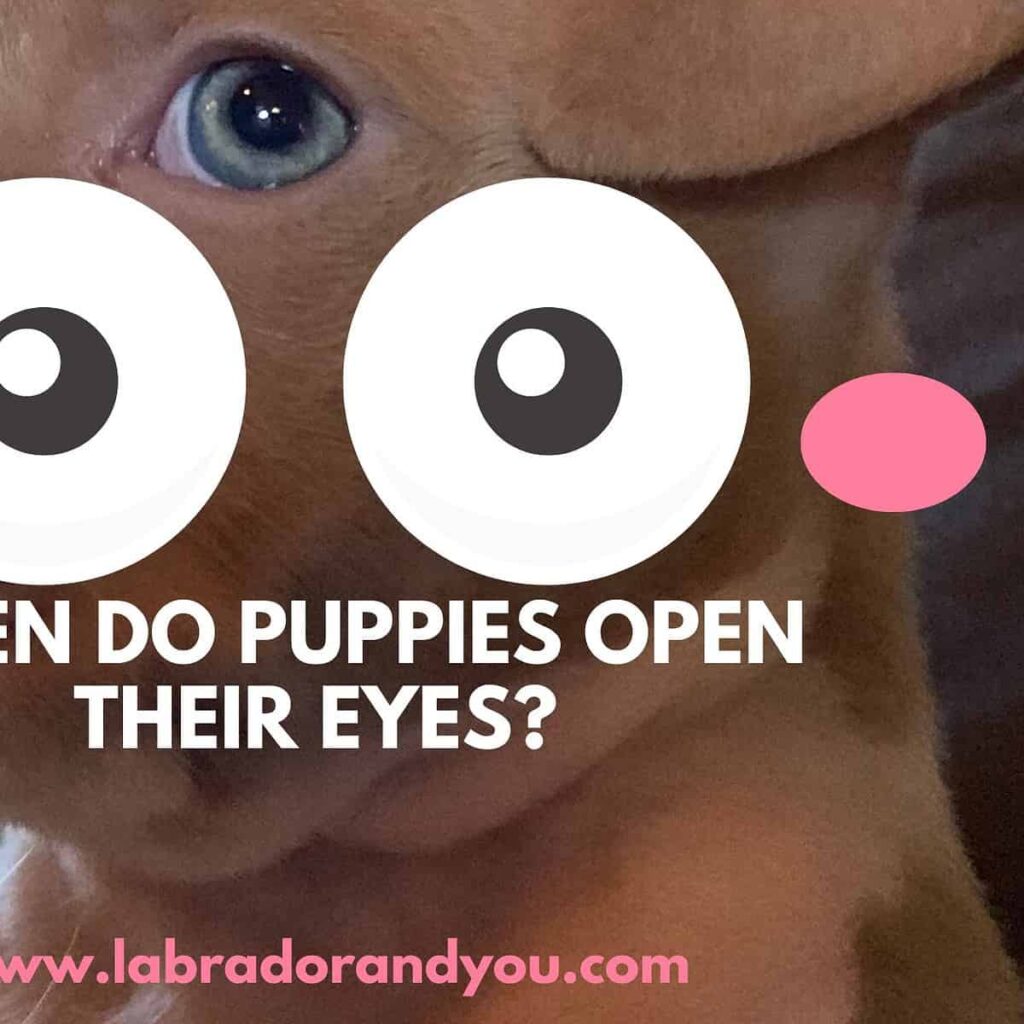Wondering how to identify a pure Labrador puppy? Firstly, check the puppy’s coat – it should be short, dense, shiny, and uniform. Their coat should be a solid color without any patches or spots.
The nose should be wide, and its eyes should be clear and expressive. The medium-sized ears should hang close to the head, and their body should be muscular and well-proportioned.
Purebred Labradors have an outgoing temperament and are friendly. They love to please people and make great family members. All things said, genetic testing is the best way to identify a purebred lab.
pure labrador puppies characteristics
A purebred Labrador has an angular head. Other characteristics include a moderately-sized muzzle, medium-sized and well-spaced eyes, and a thick and water-resistant coat.
1. Physical Appearance And Features
Breed standards may vary. As per the American Kennel Club, A labrador retriever should weigh about 55-80 pounds. They should be 21.5 to 24.5 inches tall. Three recognized labrador retrievers’ colors are yellow, black, and chocolate. The yellow color does have varying shades.
While dilute colors can be AKC registered, they are unacceptable in the show-ring business. Other physical traits include a dense, short coat, otter-like tail, broad skull, and kind eyes.

2. Personality And Temperament
Labrador Retriever has a gentle personality. They like to cuddle and are loyal to their owners. These dogs love activities like fetch or swimming and are playful.
However, temperament can vary depending on the individual dog. Some Labs may be more laid-back and easygoing, while others can be hyper. An aggressive labrador can be tamed with socialization.
One common behavioral trait is their strong sense of wanderlust. If given the opportunity, these dogs run off searching for adventure. A secure fence or leash is needed when taking them outside.
Overall, labs make wonderful family pets. They have high energy and make good working dogs and sporting dogs. No wonder they are the most popular breed of dogs. Their love for food can sometimes cause obesity.
3. Health Considerations
Labrador Retrievers are generally healthy dogs but can still suffer from breed-specific issues. Some examples include hip dysplasia, elbow dysplasia, and progressive retinal atrophy (PRA).
Ensure the breeder has conducted necessary health checks on the litter’s parents and the puppies. DNA testing can detect genetic abnormalities that might not be visible yet.
Another crucial health consideration is its nutrition and exercise requirements. A well-balanced diet with sufficient protein and nutrients maintains your puppy’s optimal growth.
Regular exercise helps burn off excess energy, which keeps them physically fit and mentally stimulated. Opt for high-quality dog food brands recommended by veterinarians. Avoid harmful additives or fillers that could harm its overall wellness.
How To Identify A Pure Labrador Retriever Puppy?
1. Researching The Breeder
Reputable breeders are transparent about their breeding process. They can answer questions about the puppy’s pedigree and provide documentation to prove their breeding standards.
Ask for referrals from a fellow dog owner or veterinarian. Look out for red flags such as unresponsiveness or reluctance to let you visit their facilities. You can identify reliable breeders via the AKC directory.

2. Verifying The Puppy’s Pedigree And Registration
A reputable breeder can provide all necessary paperwork for the puppy’s lineage, including AKC registration papers. This documentation should include detailed information about the puppy’s parents, grandparents, and ancestors.
3. Conducting A Physical Examination
Conducting a physical examination can help you identify potential red flags. Here are some things to look at:
- Coat: A Labrador’s coat should be dense, short, and water-resistant. It must have a sleek appearance.
- Eyes: The eyes of a purebred Labrador should be medium-sized. A chocolate or black lab typically has brown eyes, while yellow Labs may have lighter-colored eyes.
- Ears: The ears of a purebred Labrador should hang down close to the head and have a slightly rounded tip.
- Nose: A Labrador’s nose should be wide with open nostrils. Its color will depend on the color of its coat.
- Teeth: Check that all teeth have erupted properly by age.
- Body structure: Purebred Labradors should have an athletic build with well-proportioned muscles and limbs. They are suited for work in water or outfields.
- Tail – A labrador dog’s tail is otter-like. It is thick and tapers toward the tip.
- Behavior: Observe how the puppy plays and interacts with other puppies or older dogs.

4. Conducting Genetic Testing
A DNA test analyzes the puppy’s genetic makeup to determine its breed and ancestry. The American Kennel Club (AKC) offers genetic testing for Labrador Retrievers.
Genetic testing can reveal potential health issues like hip dysplasia early on so that preventative measures can be taken.
A CH ( Conformation Champion ) on the certificate means the dog is close to the breed standards.
3 Red Flags When Identifying Purebred Labradors
Unusual Physical Features Or Markings
Unusual physical features include an unusually curly or wiry coat, mismatched eyes, or an atypical head shape. These characteristics don’t necessarily mean the puppy isn’t purebred. However, they indicate potential health problems.
Despite their unconventional coloring, some Lab variations, such as the Silver Lab and Fox Red Lab, are still considered purebreds. If the potential dogs look smaller than usual, it might point towards some degree of mixed-breed heritage.
Behavioral
A young Labrador’s aggression, anxiety, or excessive shyness indicates a poorly bred dog. Labrador retrievers are the least aggressive dogs. Their behavior matches the cuddling kind.
If a lab shows aggressive behavior, it may not be pure. An aggressive labrador is due to inadequate training and socialization.
Unwillingness
If you encounter a breeder unwilling to answer your questions, it’s a red flag. A responsible and reputable breeder should be open and transparent.
Breeders must be able to answer whether they conduct genetic testing on their breeding dogs. This allows for better management.
6 Tips For Finding A Purebred Lab Puppy
Researching Reputable Breeders
Here are some tips to help you find a trustworthy breeder:
- Start by researching breeders online and reading reviews from previous customers.
- Ask for referrals from friends who have purchased a purebred Labrador.
- Contact local breed clubs or national registries such as the AKC American Kennel Club for recommendations.
- Ask for references and testimonials from prospective breeders.
- Ask about both parents’ health certifications and clearances of the litter. Ask if they have been screened for genetic disorders.

Visiting The Breeder And Observing The Puppies
Visit the breeder and observe the puppies. Observe firsthand how the puppies behave and interact with each other. You can also assess whether they look healthy or not.
During your visit, note how clean the breeding grounds are and whether or not they have access to food, water, and bedding materials.
Checking For Health Certifications And Clearances
The Orthopedic Foundation for Animals (OFA) conducts health screenings for dogs’ hip dysplasia, elbow dysplasia, and other genetic disorders. Breeders committed to producing healthy purebred Labradors always give OFA certification.
Ask your breeder if they have conducted specific veterinary checks on the puppy. This includes checking for parasites like worms or fleas and ensuring the new puppy has received vaccinations.
Trusting Your Instincts
Trusting your instincts doesn’t mean ignoring facts about pedigree papers or physical traits. It means using both objective information alongside subjective feelings to make informed decisions.

FAQs
how to identify labrador puppy?
DNA tests or pedigree papers are the best ways to identify a pure labrador retriever. A visual evaluation is also beneficial, but you cannot depend on it entirely.
what does a lab puppy look like?
If you see labrador retrievers with coat colors other than yellow, black, or chocolate, they are not purebred. A purebred lab can have a small white mark but nothing other than that.
Do purebred Labs have white on them?
The current breed standards are clear on what labrador retrievers should look like. However, some labs may not meet the breed standard. A mismark occasionally appears, indicating they are not purebred. A small white spot is acceptable, though.
What is the difference between pure Labrador and Labrador?
A purebred labrador adheres to the standard breed characteristics in terms of height, weight, coat color, temperament, etc., Whereas a mixed lab has varied characteristics and is different. They may exhibit the same behavior with slight variations.
How should a Lab puppy look?
A lab puppy must have a strong build, broad skull, high energy, deep chest, etc. Their broad skull usually has a defined stop. They have powerful jaws of medium length. Their cheeks are not fleshy.
What color eyes does a purebred Labrador have?
Labrador eye colors should be brown yellow and black labs. Chocolate labs can have brown or hazel eyes. Some labrador retrievers can have green or greenish-yellow eyes. Silver labrador retrievers have gray eyes.
How do you pick a good Labrador puppy from a litter?
Research is essential before purchasing a puppy from a litter. Enquire about their appetite, elimination, etc., Observe how they interact, and survey their overall appearance. Consider their health and pet parents before making a decision.
Author Profile

- Product Reviews Specialist and Cofounder
-
Labradors have an extraordinary capacity for love and companionship, and my mission is to help you unlock their full potential. Hi there! I'm Sarah, a proud contributor to Labradorandyou, the go-to online resource for all Labrador Retriever enthusiasts. As a lifelong owner and avid admirer of these remarkable dogs, I bring a wealth of knowledge and hands-on experience to our readers.
One of my strongest beliefs is in the power of positive reinforcement training. I'm truly passionate about helping our readers build strong, positive relationships with their Labradors. Whether you're a first-time owner or a seasoned Labrador enthusiast, I aim to provide you with the resources and guidance to cultivate a bond that will endure a lifetime.
Also by the author
-
 Ai NewsDecember 30, 2024Everything You Need to Know to Prevent Online Shopping Bots
Ai NewsDecember 30, 2024Everything You Need to Know to Prevent Online Shopping Bots
-
 FAQNovember 17, 2023Why Is My Dogs Poop Yellow? 8 Reasons & Solutions
FAQNovember 17, 2023Why Is My Dogs Poop Yellow? 8 Reasons & Solutions
-
 ReviewsNovember 17, 2023Hill’s Science Diet Review [ Detailed ]
ReviewsNovember 17, 2023Hill’s Science Diet Review [ Detailed ]
-
 PuppyNovember 16, 2023How To Bottle Feed A Puppy? Facts You Can’t-Miss
PuppyNovember 16, 2023How To Bottle Feed A Puppy? Facts You Can’t-Miss





